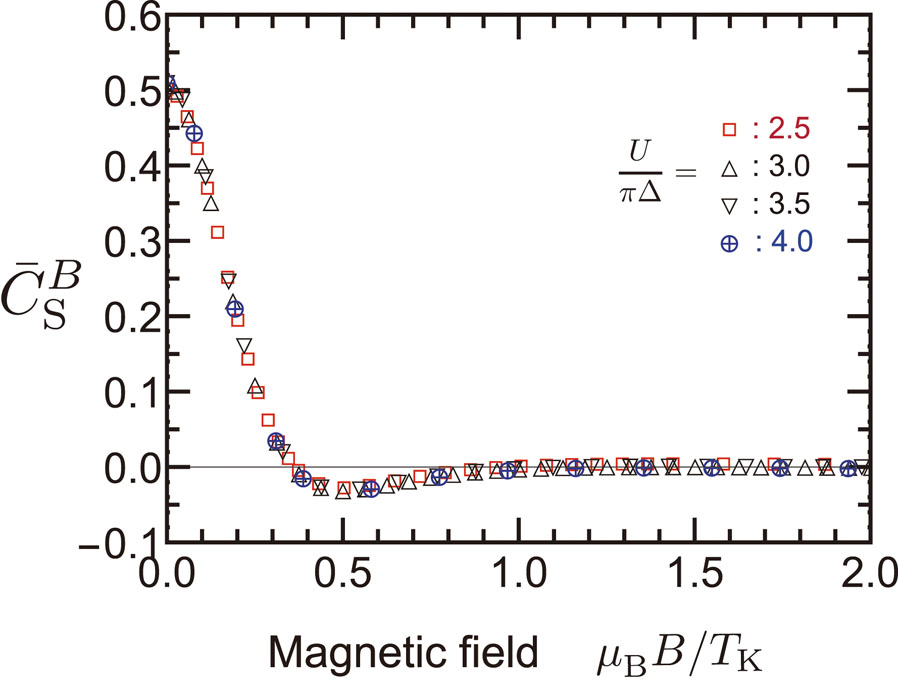Fermi-Liquid Correction in Current Noise through a Correlated Quantum Dot
Kato Group
Artificially generating, controlling, and measuring quantum states on semiconductor substrates is the key to realizing quantum information technology, such as quantum computers and quantum communications. On the other hand, the development of technologies to generate and control artificial quantum states has brought about a paradigm shift in material science. As a result, it has become possible to thoroughly explore the physical phenomena that give rise to nontrivial features of matter by artificially reproducing the quantum states in matter, rather than simply investigating the properties of natural matter as has been done in the past. Furthermore, through advanced control technology, it has become possible to precisely investigate the behavior of quantum many-body states in complex environments, such as nonequilibrium states, which were previously not easy to access.
Along with superconductivity and the quantum Hall effect, the Kondo effect is one of the fundamental many-body effects of electrons. The primary mechanism of the Kondo effect was elucidated in 1964 and has been thoroughly investigated since then. The Kondo effect occurs not only in dilute magnetic materials, where the phenomenon was originally discovered, but also in a variety of physical systems. Recently, many studies on the Kondo effect have been carried out in various physical fields, such as condensed states of light-trapped cooled atoms and quarks. However, the actual state of these systems often deviates from the ideal state assumed in the mathematical analysis. In other words, it is known that the symmetries possessed by physical states (time-reversal symmetry and particle-hole symmetry) are broken and play a significant role in the low energy states. However, the correction on the local-Fermi-liquid state beyond the linear response had remained a difficult problem until recently [1].
Consider a situation in which electrons are confined in a quantum dot, which is a device of several tens of nanometers in size made of a semiconductor or other material. In a quantum dot made of carbon nanotubes, for example, the shape of the electron confinement region is highly symmetric. As a result, in addition to the spin of the electrons, a magnetic moment is generated in the quantum dot due to the orbit of the electron motion. By attaching electrodes to this quantum dot, the number of confined electrons can be tuned, and the local-Fermi-liquid state can be controlled in a state of broken electron-hole symmetry. Using quantum field theory and mathematical methods, we have clarified that the local-Fermi-liquid corrections, which are caused by the three-electron correlation, play an essential role in the correlated quantum dot beyond the conventional theory on the local Fermi liquid. This three-electron correlation is particularly pronounced in quantum dots with multiple orbitals. For example, in the Kondo effect caused by electron spin alone, it is difficult to observe the local-Fermi-liquid corrections because the Kondo effect itself disappears when the number of electrons is changed.
Exploiting numerical simulations and field theory techniques, we have clarified that the local-Fermi-liquid corrections can be observed in actual experiments based on the transport quantities such as nonlinear current, current noise, and thermal conductivity [2]. We have also found that there is a scaling universality in the nonlinear current noise behavior when a magnetic field is applied to a quantum dot. Application of magnetic field breaks the time-reversal symmetry of the quantum dot and gives rise to the local-Fermi-liquid corrections in nonlinear transport quantities. It is also found that the local-Fermi-liquid corrections have a universal scaling property independent of the details of the nanoscale materials, similar to the conventional local-Fermi-liquid (see Figure).

Fig. 1. Bias-voltage nonlinear coefficient of current noise C
This research has significantly advanced our understanding of the physical mechanisms that give materials their nontrivial features through the interaction of electrons. The Kondo effect is the most fundamental quantum many-body effect, and it appears in the properties of various materials. Therefore, it is expected to be helpful in designing new materials and exploring new materials in the future. In addition, the study of artificially controlled quantum many-body states in nanoscale materials requires highly sensitive observation techniques, which will contribute to the development of technologies to generate and control quantum states. Recently, our collaborators have succeeded in an experiment to verify the local-Fermi-liquid correction effect using current measurement on a carbon nanotube-based quantum dot [3].
As described so far, the results of this research are fundamental to the physics of condensed matter. However, it is expected that they will lead to the development of materials science and quantum information technology.
References
- [1] C. Mora, C. P. Moca, J. von Delft, and G. Zarand, Phys. Rev. B 92, 075120 (2015).
- [2] Y. Teratani, R. Sakano, and A. Oguri, Phys. Rev. Lett. 125, 216801 (2020).
- [3] T. Hata, Y. Teratani, T. Arakawa, S. Lee, M. Ferrier, R. Deblock, R. Sakano, A. Oguri, and K. Kobayashi, Nat. Commun. 12, 3233 (2021).
